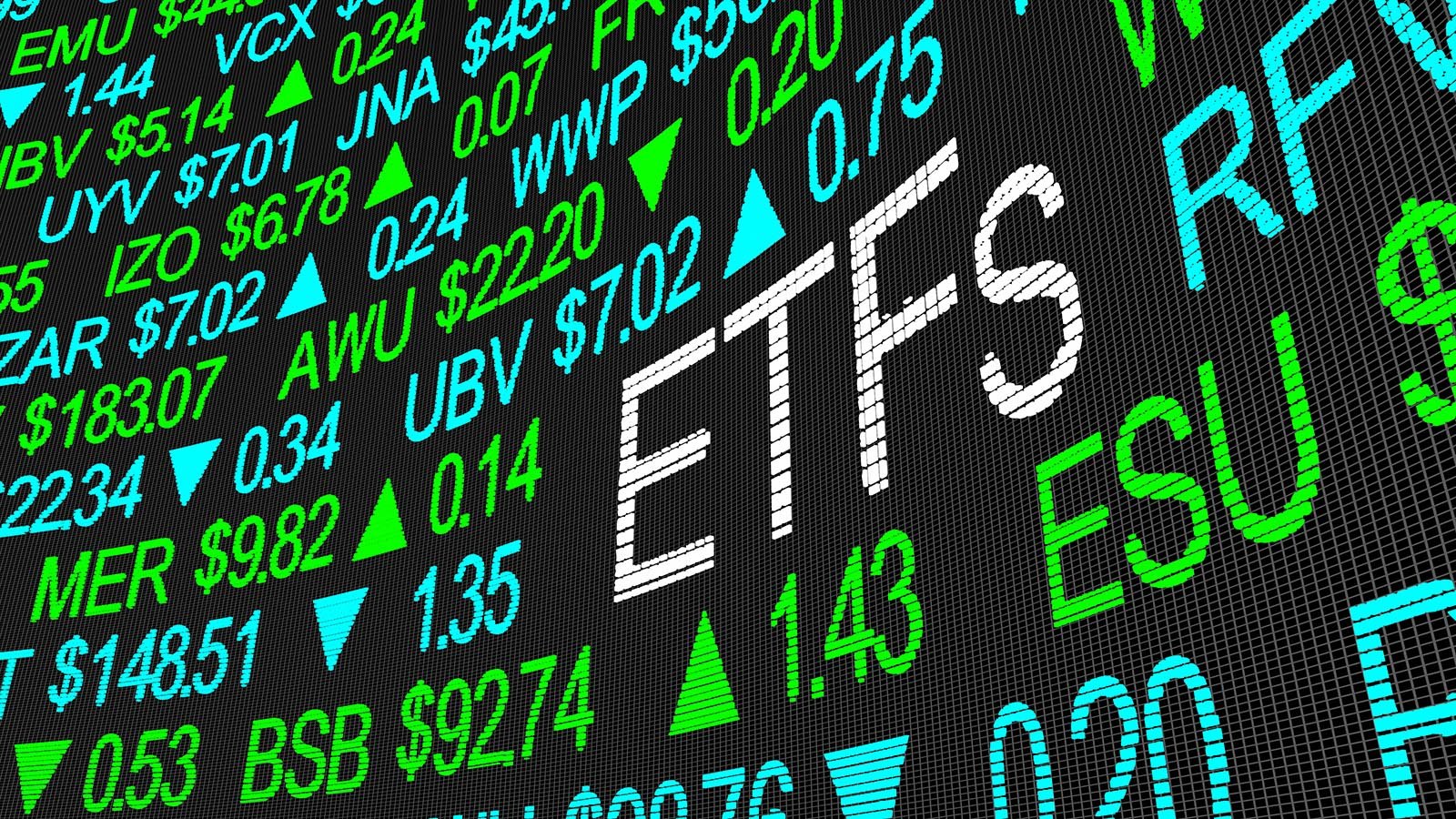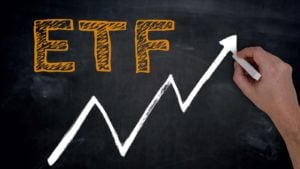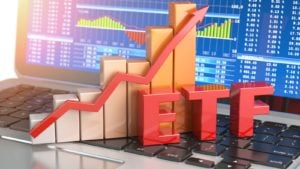
7 American ETFs for the Hometown Crowd
There's something to be said for a U.S. bias this year, and these American ETFs prove as much
For investors, there’s something to be said for favoring the good old U.S.A. and American ETFs. Over the past three years, the S&P 500 is higher by 23.5%, while the MSCI EAFE Index and the MSCI Emerging Markets Index are lower by 5.9% and 5.2%, respectively.
Yes, some of the best-performing U.S. sectors have ample international exposure — with technology being a prime example of that. Likewise, healthcare, another of this year’s leading groups, generates the bulk of its revenue within the confines of U.S. borders.
Thar said, though, what is happening in 2020 is underscoring the case for American ETFs. While the major domestic equity benchmarks aren’t immune to the novel coronavirus shocks, the pandemic and sagging oil prices are punishing emerging markets benchmarks while global investors are finding little reason to embrace ex-U.S. developed markets despite the value propositions offered in some of those regions. In other words, international ETFs are contrarian plays and that’s not always a positive.
So, for those looking to embrace the home-country bias, here are some American ETFs to consider:
- Health Care Select Sector SPDR (NYSEARCA:XLV)
- iShares Core S&P Small-Cap ETF (NYSEARCA:IJR)
- Pacer Benchmark Industrial Real Estate SCTR ETF (NYSEARCA:INDS)
- VanEck Vectors Retail ETF (NYSEAMERICAN:RTH)
- SPDR S&P Dividend ETF (NYSEARCA:SDY)
- Global X U.S. Infrastructure Development ETF (CBOE:PAVE)
iShares U.S. Insurance ETF (NYSEARCA:IAK)
With all of that in mind, let’s dive in.
American ETFs to Consider: Health Care Select Sector SPDR (XLV)

Expense ratio: 0.13% per year, or $13 on a $10,000 investment
The Health Care Select Sector SPDR is home to venerable names, including Johnson & Johnson (NYSE:JNJ), Merck (NYSE:MRK) and Pfizer (NYSE:PFE). While those are multi-national companies, the fact is the domestic healthcare industry generates about $7.80 of each of its $10 in sales here in the U.S.
That data point pertains to more than just blue-chip pharmaceuticals companies. Not surprisingly, healthcare services providers — XLV’s third-largest industry weight — and biotechnology companies are heavily dependent on the U.S. for the bulk of their top line growth.
At a time of an international pandemic, and the potential for heightened trade tensions as a result of the coronavirus scenario, healthcare’s domestic exposure is an advantage for investors as it’s one of a few sectors forecast to deliver stout earnings and revenue growth this year. In fact, the broader healthcare sector should deliver earnings and top line growth of 9% and 14%, respectively this year, according to FactSet.
iShares Core S&P Small-Cap ETF (IJR)

Expense ratio: 0.07% per year
The iShares Core S&P Small-Cap ETF isn’t just one of the least expensive small-cap ETFs, it’s an ideal American ETF because because many companies that fit the bill as small caps generate hefty percentages of their revenue in the U.S. Historically speaking, there are advantages that come with the domestic bias inherent with smaller equities.
“Small-cap companies tend to offer higher exposure to domestic revenue sources than large-cap stocks, thus historically offering diversification to a global equity portfolio,” according to MSCI. “Their domestic bias also made them historically less sensitive to macro factors (and less global) than large companies.”
Additionally, there’s another perk not addressed in the above. Some large-cap heavy sectors, such as consumer staples and technology, depend on non-U.S. markets for big chunks of their sales. That’s great when the dollar is weak, and those companies can convert stronger foreign currencies into more greenbacks. However, that’s not the case today, as the coronavirus is forcing a rush to safer assets — strengthening the dollar in the process.
Although, the a sturdy U.S. currency isn’t a drag on smaller companies because most of their sales are dollar-denominated in the first place.
Pacer Benchmark Industrial Real Estate SCTR ETF (INDS)

Expense ratio: 0.60% per year
Real estate companies residing in the S&P 500 have little foreign exposure, but that’s not the entire story with the Pacer Benchmark Industrial Real Estate SCTR ETF. Actually, that factoid barely scratches the surface of what makes INDS one of the most compelling American ETFs.
Chances are you’ve heard about the woes of brick-and-mortar retailers, which are being exacerbated by the coronavirus crisis. Conversely, e-commerce companies are thriving and that growth requires more real estate — the types of properties run by the companies in INDS. That said, these properties are neither cheap nor small.
“Last month, Link Industrial, Blackstone’s industrial-property investment arm, completed a $650 million acquisition of a roughly seven million square foot portfolio of warehouse properties in Minnesota and Colorado,” reports Business Insider.
The bottom line? E-commerce doesn’t always mean Amazon (NASDAQ:AMZN), and INDS’s strong returns prove as much.
VanEck Vectors Retail ETF (RTH)

Expense ratio: 0.35%
It doesn’t get much more American that shopping. That’s not hyperbole. That’s confirmed by consumer spending driving about 70% of U.S. GDP. With that in mind, the VanEck Vectors Retail ETF is a solid play on that theme with exposure to both e-commerce and brick-and-mortar retailers.
RTH fills some other voids, too. For example, capital starved investors looking for Amazon exposure may want to consider this fund because it allocates over a quarter of its weight to the e-commerce juggernaut. Additionally, the VanEck fund features substantial allocations to some of the survivors/winners of traditional retail, including Dow components Home Depot (NYSE:HD) and Walmart (NYSE:WMT). That pair combine for over 19% of RTH’s roster.
The straight forward assessment of RTH is this: it features exposure to both consumer discretionary and staples stocks, but the former account for two-thirds of the fund’s weight. Translation: RTH is a play on the strength of the U.S., as represented by Amazon, of course.
SPDR S&P Dividend ETF (SDY)

Expense ratio: 0.35%
Dividends aren’t a distinctly American idea. There are several markets, both developed and emerging, outside the U.S. offering sturdy payouts. Unfortunately, the idea of negative dividend action — cuts, eliminations or suspensions — isn’t relegated to the U.S., either. However, investors can guard against some of that negativity with the SPDR S&P Dividend ETF.
SDY tracks the S&P High Yield Dividend Aristocrats Index, which only includes companies that raised their payouts for 20 consecutive years.
“The fund’s benchmark applies a rigorous screen for dividend durability. Eligible stocks must have raised dividend payments for at least 20 consecutive years,” according to Morningstar. “Although this is a high bar for inclusion, it is a backward-looking screen and there is no guarantee that firms won’t succumb to dividend cuts. Those that do quickly get the boot.”
At the sector level, SDY tilts toward groups that are domestic revenue generators. For example, financial services and utilities stocks combine for nearly 30% of the fund’s weight.
Global X U.S. Infrastructure Development ETF (PAVE)

Expense ratio: 0.47% per year
When it comes to both investing and politics, perhaps there’s nothing more American than being tempted, then disappointed by infrastructure. What that means is that politicians from both parties frequently pay lip to service to increased spending on infrastructure, but they’re usually long on talk and short on action. Quick history lesson: the U.S. hasn’t passed a comprehensive infrastructure bill since the Eisenhower Administration.
Should that change, however, the Global X U.S. Infrastructure Development ETF is an ideal way to play that theme. This is because unlike rival infrastructure ETFs, PAVE is solely dedicated to domestic companies. Data confirm that boosting infrastructure would drive increased economic activity.
“A $2.1 trillion boost of public infrastructure spending over a 10-year period, to the levels (relative to GDP) of the mid-20th century, could add as much as $5.7 trillion to the U.S. over the next decade creating 2.3 million jobs by 2024 as the work is being completed. The additional 0.3% boost to productivity per year that it generates will lead to a net 713,000 more jobs on the books by 2029,” according to S&P Global Ratings.
iShares U.S. Insurance ETF (IAK)

Expense ratio: 0.43%
Based purely on revenue, it’s hard to find an industry that’s more American than insurance — a sentiment that extends well beyond on health insurance. By revenue, life insurance is the fifth-largest industry in the U.S. while property and casualty insurance is seventh on that list.
Combined, those corners of the insurance universe generate over $1.5 trillion in revenue — giving the iShares U.S. Insurance ETF plenty of credibility as American ETF.
Oddly enough, though, IAK stock is being hindered by an issue that’s prevalent around the world, as well as here in the U.S.: low interest rates. Insurance providers can’t take excessive risk with the investment vehicles they use to deploy cash and that’s problematic in a low rate environment. That’s reflected in IAK stock being down 23.5% year-to-date.
Todd Shriber has been an InvestorPlace contributor since 2014. As of this writing, he did not hold a position in any of the aforementioned securities.